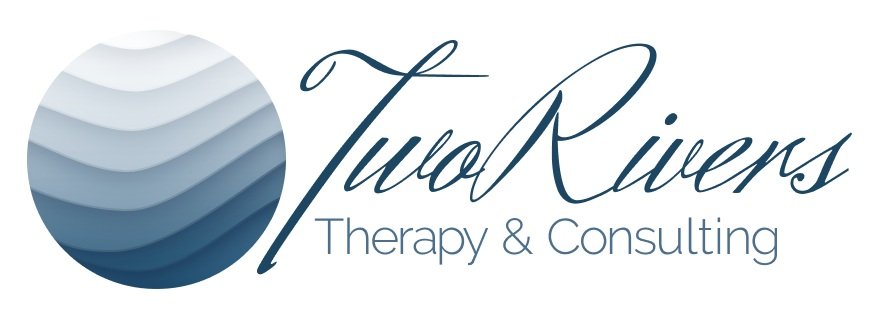Smashing the Double Bind: Authentic Work-Life Balance
Understanding the Struggles: Achieving Authentic Work-Life Integration
Exploring the Double Bind and Patriarchal Norms
For individuals striving to find balance and harmony between their professional and personal lives, the journey can often feel like navigating an intricate maze. The demands of work, family, and personal obligations often clash, leaving individuals caught in a perplexing web of expectations and obligations. The pervasive double bind and patriarchal norms further compound this struggle.
Unmasking the Double Bind
The double bind refers to a situation where individuals are confronted with contradictory expectations or demands, making it virtually impossible to satisfy them all. Work-life integration manifests as the pressure to excel professionally while meeting societal expectations of being a perfect caregiver, partner, or family member. This inherent contradiction creates a complex and challenging environment, leaving individuals torn between their professional aspirations and personal responsibilities.
Patriarchal Norms: Unveiling the Invisible Barriers
Beneath the surface of the double bind lies the deeply ingrained patriarchal norms that have shaped societal expectations and power dynamics for centuries. These norms often perpetuate gender inequalities, reinforce traditional gender roles, and limit opportunities for individuals, particularly women, and femmes, to fully integrate their work and personal lives. The patriarchal framework burdens women unfairly and restricts masc people from fully embracing their nurturing and caregiving roles.
A Feminist Perspective: A Catalyst for Change
It is essential to address these challenges from a critical and feminist perspective to unravel the complex web of patriarchal norms and double-bind expectations. Feminism, as a framework for understanding and challenging power imbalances, offers a valuable lens through which we can examine and transform work-life integration. By deconstructing traditional gender roles and advocating for equality, feminism paves the way for individuals of all genders to navigate the integration of work and personal life authentically.
Throughout this blog post, we will delve deeper into the struggles faced by individuals seeking work-life integration, examine the impact of the double bind and patriarchal norms, and explore how a critical and feminist perspective can catalyze change. Join us on this transformative journey as we unravel the layers of the double bind and dismantle patriarchal norms to create a more inclusive and empowering work-life integration experience.
Decoding the Double Bind: Implications for Work-Life Balance
Defining the Double Bind and Its Impact
The double bind, a concept coined by social scientists, refers to the contradictory expectations placed on individuals, making it impossible to meet all demands simultaneously. Work-life integration manifests as the pressure to excel professionally while fulfilling societal expectations of being an ideal caregiver, partner, or family member. This perpetual balancing act often leads to stress, burnout, and a sense of inadequacy, impacting individuals' overall well-being and ability to achieve authentic work-life integration.
Patriarchal Norms: Amplifying the Double Bind
Patriarchal norms significantly contribute to the complexities of the double bind, particularly for individuals who identify as women. These societal norms reinforce traditional gender roles, perpetuating the idea that women should prioritize their caregiving responsibilities over their professional pursuits. As a result, women often face unique challenges in reconciling their career aspirations with societal expectations of being the primary nurturer. This imbalance further intensifies the double bind, hindering women's ability to fully integrate their work and personal lives.
Unveiling Patriarchal Norms: Impeding Work-Life Balance
Historical Roots: Understanding the Origin of Patriarchal Norms
To comprehend the impact of patriarchal norms on work-life integration, we must delve into their historical context and roots. Patriarchal norms have been deeply entrenched in society for centuries, shaping power dynamics, gender roles, and societal expectations. These norms emerged from historical systems that positioned men as the primary providers and decision-makers while women were confined to domestic roles. Though progress has been made over time, remnants of these norms persist, influencing workplace dynamics and impeding authentic work-life integration.
Impediments to Work-Life Integration: How Patriarchal Norms Persist
Patriarchal norms continue to hinder work-life integration in several ways. Firstly, they perpetuate gendered expectations and reinforce the notion that women should shoulder most caregiving responsibilities, placing them at a disadvantage in balancing work and personal life. Secondly, patriarchal norms often stigmatize flexible work arrangements or prioritize personal needs, creating barriers for women and men seeking work-life integration. Additionally, these norms contribute to a lack of support systems, such as affordable childcare or inclusive parental leave policies, further exacerbating individual challenges.
Dismantling Patriarchal Norms: Building an Inclusive Work Environment
To achieve authentic work-life integration, it is imperative to dismantle patriarchal norms and create an inclusive and equitable work environment. This requires a multifaceted approach involving individuals, organizations, and societal change. By challenging traditional gender roles and biases, fostering workplace policies that support work-life balance, and promoting inclusive leadership, we can disrupt the power dynamics perpetuating patriarchal norms. Emphasizing the value of caregiving and nurturing responsibilities for all genders is crucial in reshaping societal expectations and creating a more harmonious integration of work and personal life.
By recognizing the historical context and implications of patriarchal norms, analyzing their hindrance to work-life integration, and actively working towards their dismantlement, we can pave the way for a more inclusive, equitable, and supportive work environment. The following section will explore the potential of adopting a critical and feminist perspective as a catalyst for challenging patriarchal norms and reimagining work-life integration.
Redefining Work-Life Integration: A Feminist Perspective
A Critical Lens for Work-Life Integration
Introducing feminist theory as a critical lens, we can examine work-life integration through a transformative and empowering perspective. Feminism seeks to dismantle gender inequalities and challenge societal norms perpetuating traditional gender roles and power dynamics. By applying feminist principles to work-life integration, we can redefine and reshape the concept, moving beyond the limitations imposed by patriarchal norms.
Challenging Gender Roles: Breaking Free from Stereotypes
One of the fundamental aspects of feminism is the challenge to traditional gender roles. By advocating for equality and inclusivity, feminism dismantles the notion that women should solely be responsible for caregiving and men should primarily focus on their careers. Embracing a feminist approach to work-life integration allows individuals of all genders to freely express their desires, aspirations, and responsibilities without conforming to rigid stereotypes.
The Benefits of a Feminist Approach to Work-Life Integration
Adopting a feminist approach to work-life integration benefits individuals, organizations, and society. Firstly, it promotes gender equity by acknowledging and valuing individuals' diverse experiences and contributions across the gender spectrum. Secondly, it fosters a more inclusive and supportive work environment that accommodates employees' varying needs and aspirations, increasing job satisfaction and overall well-being. Finally, embracing a feminist perspective dismantles the hierarchical power structures, creating space for collaborative decision-making and innovative approaches to work-life integration.
By embracing a feminist lens, we can challenge the status quo, break free from limiting gender roles, and unlock the potential for a more authentic, equitable, and fulfilling work-life integration experience. The following section will explore practical strategies and tips for achieving authentic work-life integration while navigating patriarchal norms and societal expectations.
Navigating the Path: Practical Strategies for Work-Life Balance
Setting Boundaries and Prioritizing Self-Care
When aiming for authentic work-life integration, it is crucial to establish clear boundaries between work and personal life. This involves defining specific times and spaces dedicated to each aspect and committing to honoring those boundaries. Additionally, prioritizing self-care is essential for maintaining well-being and avoiding burnout. Carve out time for activities that rejuvenate you, whether practicing mindfulness, engaging in hobbies, or spending quality time with loved ones.
Seeking Support and Building Networks
Recognize that you don't have to navigate work-life integration alone. Seek support from friends, family, and colleagues who understand and respect your aspirations for balance. Connect with like-minded individuals through networking events, online communities, or professional organizations prioritizing work-life integration. Building a support network allows you to share experiences, exchange advice, and gain valuable insights to overcome challenges.
Organizational Support: Fostering a Culture of Integration and Equality
Organizations play a pivotal role in promoting authentic work-life integration. They can foster a culture that values and supports employees' personal lives alongside their professional pursuits. Encourage open communication and flexibility, allowing employees to adapt their schedules and work arrangements to meet their responsibilities. Implement policies that provide parental leave, childcare support, and remote work options to create a more inclusive and equitable work environment. Organizations can enhance employee satisfaction, productivity, and well-being by prioritizing work-life integration.
By implementing these practical strategies and acknowledging the significance of setting boundaries, prioritizing self-care, seeking support, and creating an organizational culture that values work-life integration, individuals and organizations can pave the way for a more authentic and harmonious approach to work and personal life. In the next section, we will explore inspiring case studies and success stories demonstrating the transformative potential of embracing these strategies.
Embracing Authentic Work-Life Integration: Unraveling Patriarchal Norms
Recapping the Journey: Key Points Explored
Throughout this blog post, we have embarked on a transformative journey to understand individuals' challenges in achieving authentic work-life integration. We explored the double bind concept and how patriarchal norms exacerbate this struggle, perpetuating gender inequalities and limiting opportunities for all genders. By adopting a critical and feminist lens, we unveiled the hidden barriers imposed by these norms and the potential for change. We discussed practical strategies for individuals to navigate the complexities of work-life integration while emphasizing the role of organizations in fostering a culture of equality and integration.
Unraveling Patriarchal Norms: A Path to Authenticity
Unraveling patriarchal norms is crucial for achieving authentic work-life integration. By challenging traditional gender roles and power dynamics, we can create space for individuals to embrace their personal and professional aspirations without compromising fully. This dismantling process requires a collective effort, encompassing individuals, organizations, and society.
Unraveling patriarchal norms is crucial for achieving authentic work-life integration and fostering a more inclusive and equitable society. By challenging traditional gender roles and power dynamics, we create space for individuals of all genders to flourish and thrive personally and professionally. This dismantling process necessitates a collective effort, with individuals engaging in self-reflection and advocacy, organizations implementing policies prioritizing work-life balance and equality, and society as a whole challenging and reshaping societal expectations. Together, we can create a world where work-life integration is not a compromise but a harmonious integration of diverse aspirations, responsibilities, and identities.
Embrace Change: A Call to Action
As we conclude this blog post, I invite you to take action and challenge societal norms. Embrace a feminist approach to work-life integration, advocating for equality and inclusivity and recognizing diverse experiences and responsibilities. Encourage open conversations, support others in their pursuit of work-life integration, and foster environments that prioritize well-being and balance. Together, we can dismantle patriarchal norms, create a more authentic and equitable work-life integration experience, and pave the way for a more inclusive future.</p> <p>Thank you for joining us on this transformative journey. Let us continue to smash the double bind, unravel patriarchal norms, and strive for authentic work-life integration.
Empower Yourself: Further Exploration and Engagement
Expand Your Knowledge: Recommended Resources
If you are interested in delving deeper into the topics discussed in this blog post, here are some recommended resources to continue your exploration:
Books for Self-Study:
Lean Out: The Struggle for Gender Equality in Tech and Start-Up Culture by Elissa Shevinsky: This book offers insights into women's challenges in the tech industry and examines the intersection of patriarchal norms and work-life integration within this context.
"All the Rage: Mothers, Fathers, and the Myth of Equal Partnership" by Darcy Lockman: Focusing on the division of labor within the parenting and household responsibilities, this book delves into the impact of gendered expectations on work-life integration and offers a critical examination of societal norms.
Feminism Is for Everybody by bell hooks is a seminal work that is a powerful introduction to feminist theory and its relevance to everyday life. In this accessible and engaging book, bell hooks address the misconceptions and stereotypes surrounding feminism, emphasizing its inclusive nature and potential for creating positive change for everyone, regardless of gender. With clarity and passion, hooks explore various topics, including reproductive rights, violence against women, intersectionality, and the importance of feminist education. Feminism Is for Everybody invites readers to embrace feminism as a transformative movement that seeks to dismantle systems of oppression and build a more just and equitable world for all.
Articles:
Unraveling the Double Bind: Overcoming Work-Life Integration Challenges This article explores the double bind concept and how it impacts individuals achieving work-life integration. It discusses practical strategies for navigating these challenges and emphasizes the importance of dismantling patriarchal norms. (Link: [insert link])
The damaging effect of gendered views of work-life balance This article delves into feminist perspectives, highlighting how feminism challenges traditional gender roles and power dynamics. It discusses the importance of redefining work-life integration from a feminist lens and offers insights for achieving a more equitable and authentic approach. (Link: [insert link])
Gender Equality and Work-Life Balance This article explores the role of organizations in fostering a culture of work-life integration and gender equality. It discusses the importance of organizational support, policies, and practices prioritizing work-life balance and creating a more inclusive and supportive work environment for all employees.
Try Counseling with Two Rivers Therapy Colorado.
If you're feeling burnt out, don't suffer in silence. Take action today by seeking professional burnout therapy. With the right help and support from our therapists for burnout in Colorado, you can overcome burnout and prevent it from taking a toll on your life and well-being. Don't wait any longer; prioritize your mental health with Two Rivers Therapy. Follow these simple steps on your journey toward recovery!
Meet with one of our skilled anxiety therapists.
Start overcoming your burnout symptoms and begin seeing positive changes in your life!
Other Services Offered at Two Rivers Therapy
At Two Rivers Therapy, we understand you may be struggling with multiple problems. To best support our clients in achieving optimal mental health and well-being, we offer anxiety therapy, depression treatment, trauma therapy, therapy for teens, and therapy for the overwhelmed and overworked. In addition to these services, we also offer clinical supervision to receive guidance and support from someone who has more experience than you may. To learn more, check out our blog or About Us!
Ann Robinson (she/her) is a trauma therapist and clinical supervisor in Fort Collins, Colorado. When she's not busy helping her clients navigate life's ups and downs, you can find her co-owning Two Rivers Therapy & Consulting. Ann has a knack for working with womxn who exudes enough grit and resilience to make Wonder Woman blush. Her secret weapon? Incorporating humor into therapy sessions because, let's face it, life's too short to take everything so seriously. Ann's got your back if you're ready to cope with lives stressors without burning the candle at both ends.











